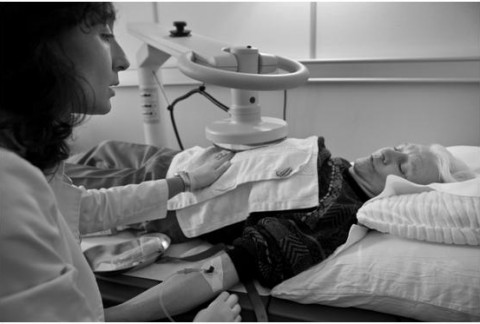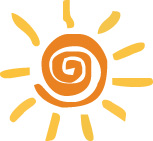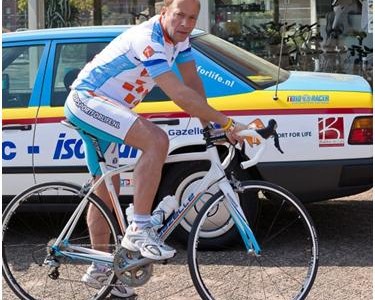У клеток рака неправильный метаболизм. Нормальные клетки, находящиеся повсюду в организме, производят углекислый газ, как отходы. В отличие от них, злокачественные клетки производят молочную кислоту. Когда клетки рака внутри опухоли нагревают до 42°C (107.6°F), производство молочной кислоты резко возрастает, и клетки становятся крайне кислотными (водородный показатель понижается)5. По мере того, как метаболизм внутри опухолевых клеток ускоряется, они, по существу, самоуничтожаются и тонут в молочной кислоте, которую производят. Здоровые ткани, окружающие клетки рака не затрагиваются локализованным направлением тепла, используемым в терапии. В ходе тех же биологических процессов, происходящих, в меньшей степени, при нормальном уровне лихорадки 38.3° C (101.3° F), рак все дольше находится в стрессовом состоянии и его клетки производят все больше молочной кислоты.
Частичная гипертермия
- Home
- Частичная гипертермия
- Local Hyperthermia as a major tool in treating Cancer patients successfully in a non-toxic way
- (English) Why are IQ scores declining over the previous 20 years?
- (English) Expert report regarding the clinical use of CBD
- CBD effective in Healing Bone Fractures at all Ages and Prevention and Cure of Osteoporosis and Arthrosis
- (English) Medical Cannabis Approval Sweeps Across Europe
- (English) More people die from overdosing on pharmaceutical drugs than illegal drugs
- (English) Flu vaccine BOMBSHELL: 630% more “aerosolized flu virus particles” emitted by people who received flu shots… flu vaccines actually SPREAD the flu
На сегодняшний день существует более чем 2800 статей в медицинской литературе, каталогизированных как «региональная гипертермия». Прежде чем начать клинические испытания, были проведены сотни предварительных исследований на животных.
В традиционной онкологии, большинство исследований дали высокую оценку применению частичной гипертермии вместе с лучевой или химиотерапией. Было осуществлено как минимум 230 клинических испытаний по всему миру, включая Канаду, Китай, Францию, Германию, Грецию, Италию, Израиль, Японию, Нидерланды и Швецию. В Национальном Институте по изучению проблем Рака в Риме и Национальном Центре Исследования Рака в Хайдельберге, Германия были проведены обширные исследования, длившиеся более двадцати лет.
-
Подводя итог вышесказанному

-
Сделать рак видимым для иммунной системы
As mentioned, approximately 2,800 articles have been published to date on “regional” or “local” hyperthermia. Among the 50 most recent studies on local hyperthermia, the majority (32 of the studies) involved the use of hyperthermia with chemotherapy. The majority of the other studies evaluated local hyperthermia in combination with surgery and with radiation. The others involved some form of immunotherapy provided in combination with the local hyperthermia treatments (primarily TNF-alpha—tumor necrosis factor-alpha).
Researchers have documented that conventional treatments such as chemotherapy and radiation, used in combination with local hyperthermia, clearly work more effectively with less side effects. Only a handful of large clinical trials have focused on local hyperthermia as a stand-alone treatment, perhaps due to the lack of economic incentives.
We predict that in the future, patients who desire a non-toxic approach to cancer will be treated with localized hyperthermia, paired with some form of immunotherapy such as those offered at the Medical Center Cologne.
-
ссылки
Overgaard, J. (2006). Effect of hyperthermia on malignant cells in vivo: A review and a hypothesis. Cancer, 39(6), 2637-2646.
Patient's Experience at MCC
Twenty years ago, Teun van Vliet was twice an indoor world champion cyclist and in 1988 wore the yellow jersey in the Tour de France.
In 2001 he was diagnosed with a brain tumor and in 2006 an inoperable recurrence of the tumor was detected. Teun had another round of brain surgery (“debulking”) and also received radiation treatment. This caused him to lose his power of speech, and to some degree he also lost memory and coordination.Within conventional oncology, nothing could be done for him. He was told that he had a year left to live at the most. Teun and his girlfriend decided to seek a second opinion and they went to Cologne to consult with Dr. Gorter, who advised him to do local hyperthermia in combination with immune therapy.
Teun’s partner soon noticed beneficial changes in his health: “The first thing we noticed about these treatments was that they really improved his speech. He is much more lively; more active. I have my old buddy back, really. When he comes home from Cologne, his speech has improved, his motor skills have improved, he feels more energetic. Nothing but improvements. The quality of his life is definitely better. In April 2010, a new MRI scan confirmed that there is still no recurrence of the cancer and Teun has been clinically cancer-free for more than four-and-a-half years.
Teun van Vliet’s remarkable recovery from end-stage primary brain cancer has been written up in the following book: Bindels, G. (2010). Teun van Vliet-Drank, Vrouwen, de Koers en de Dood. Leeuwarden, The Netherlands: Elikser B.V.


 English
English Deutsch
Deutsch Nederlands
Nederlands Turkish
Turkish Italiano
Italiano Français
Français Português
Português العربية
العربية
